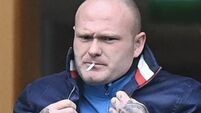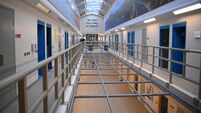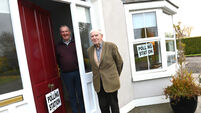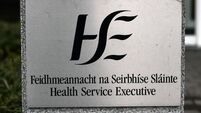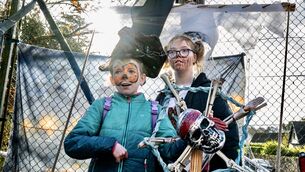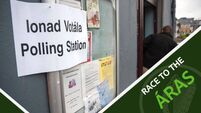Eyes in the sky crucial to convictions in Kieran Quilligan case
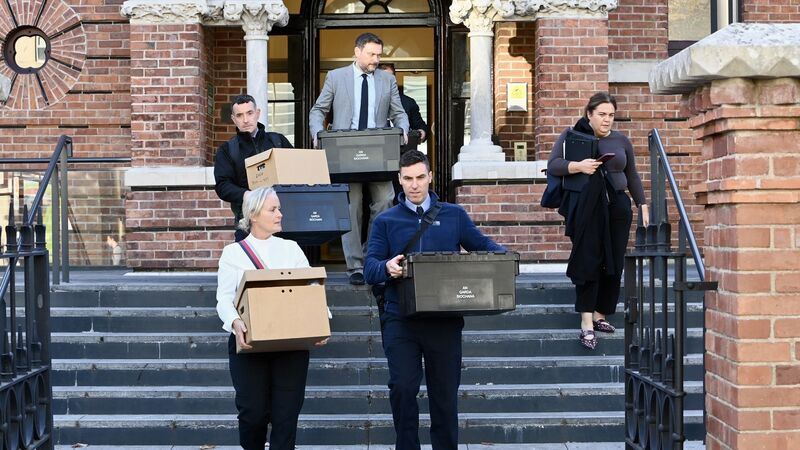
It took a degree of attention even to follow this evidence at the murder trial — not to mind say put it together — but it was another compelling piece of a professionally assembled prosecution jigsaw that the jury saw. File Picture: Larry Cummins
The Goldy Angel had an all-seeing view of the last moments of Kieran Quilligan’s life.
So much Cork folklore attaches to the golden angel perched high on St Fin Barre’s Cathedral.
More familiarly, and affectionately, known as the Goldy Angel, local legend has it that when the angel falls from her perch, Cork too will fall.
Or will be doomed to perish.
And if the mighty icon does fall, it will possibly crash to Earth on St Fin Barre’s Place’s wide, twisting steps from Proby’s Quay to Dean St where Mr Quilligan met his end.
The angel will doubtless have seen generations of Cork people cutting through this lane as a shortcut to town, students making their way home to flats by the college after a night of revelry, or the angel may have averted her eyes from an occasional courting couple or, less happily, some fighting.
Not far from where someone chose to paint a mural on a wall of the lane commemorating the 1965 visit of The Rolling Stones to the Savoy in Cork, Mr Quilligan was brutally slain on St Fin Barre’s Place.
He was then bundled into the boot of a car and driven from the laneway to a farm in East Cork where, 20 minutes later, whatever was left of his life was finally extinguished.
It took four months before the skeleton of Mr Quilligan was found at another location in East Cork with the help of a cadaver dog from the Police Service of Northern Ireland (PSNI), whose handler brought him to Cork to assist with the painstaking garda search.
Assistant state pathologist Margaret Bolster was asked if four months for a body to skeletonise was a long or short time, and she said the process of decomposition was entirely variable and could alter by conditions being hot or cold, wet or dry, and the presence or absence of predators.
She said that among the bones that remained, with their 19 fractures and hammer marks, there was one surviving scrap of skin still adhering to bone and it bore a single word from a tattoo: “Mother”.
Not for the first time in a murder trial, it was during Dr Bolster’s evidence that some members of the deceased person’s family had to leave the room, clearly distressed.
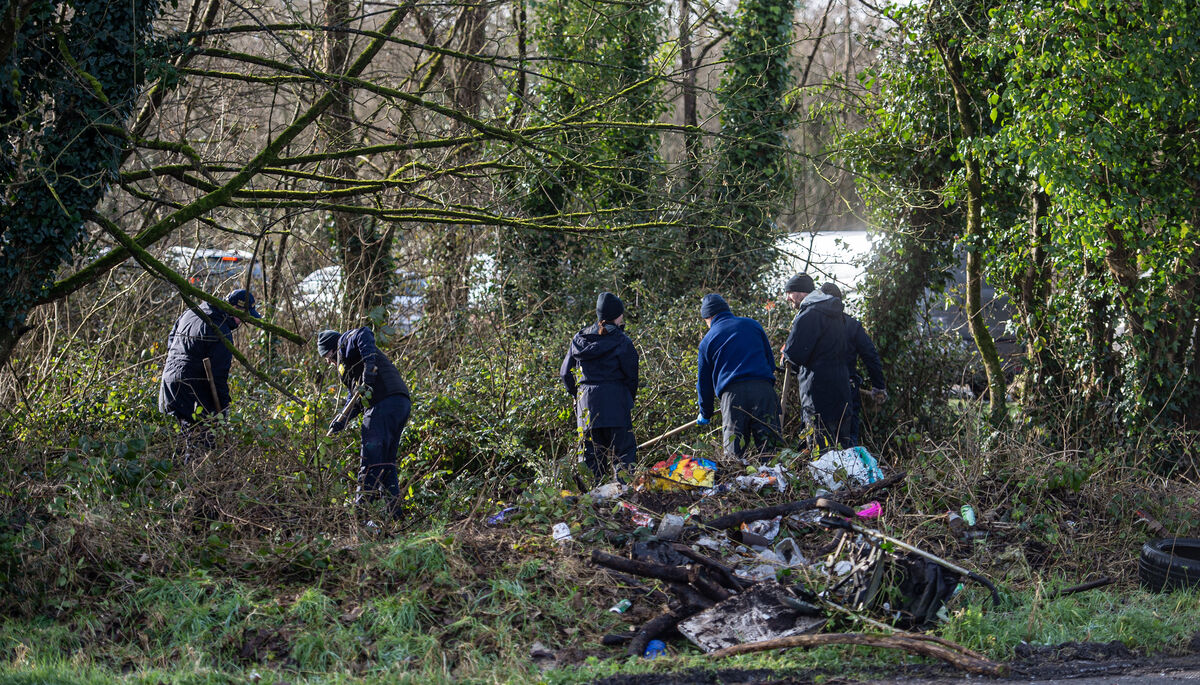
It was a huge breakthrough to find the remains but, even so, the garda investigation had to piece together the story from the time before Mr Quilligan was last seen in the shadow of the Goldy Angel and his remains being found kilometres away under mud, debris, and a couple of gravel bags.
In these more secular days, statues of angels are viewed less in terms of supernatural or sentimental properties than, at best, beautiful pieces of crafted metal.
And the idea of something looking down on us from above is “old hat”.
Oddly enough, this murder trial playing out in October 2025 was, almost in its every detail, about what is looking down on us from above.
Cameras overlooking the streets of the city and attached to buildings throughout rural areas were examined to see what they captured from above.
And it was through the harvesting of their data, together with the GPS data and call records of phones, that a picture — or a picture made of hundreds of pieces — was put together like a jigsaw for the jury to see for itself what happened at those key times in September 2023.
Largely, through what was seen from above, a brutal human drama was played out for the jury.
It was invited to put together the multiple strands of circumstantial evidence and bind them together to form the strength of a rope, so that it could be satisfied beyond reasonable doubt to convict Niall Longtarget="_blank" rel="noopener noreferrer"> and Luke Taylor of murder.
By looking down from above, the jury was invited to infer the motive for murder, the luring of the victim, the co-ordinated movements of the two killers, the disposal of the body, and the subsequent moving of the remains to another location where Quilligan might never have been found.
Drug deal
How could cameras catch a motive?
By following Mr Quilligan and his friend John Paul Thornton, also known as Bubbles, to a drug deal where Long was the dealer.
Not alone did the camera catch them walking to a quiet residential lane off York St, off MacCurtain St, but there was an audio recording too.
What it sounded like was a €200 deal where the buyers were short €5 or €10, and there was a row about this shortfall.
Instead of Mr Quilligan and his friend walking away or buying less, or whatever other resolution might have been possible, the situation overheated.
Long and Mr Quilligan robbed Mr Thornton of €200 worth of heroin, €200 worth of crack cocaine, tablets, and €500 to €600 in cash.
They walked out of the lane. The bag Long had strapped over his shoulder moments earlier was gone from him. Mr Quilligan was now carrying it.
The deceased and Bubbles made their way to Mr Quilligan’s apartment, provided by the Simon homeless service at Anderson’s Quay.
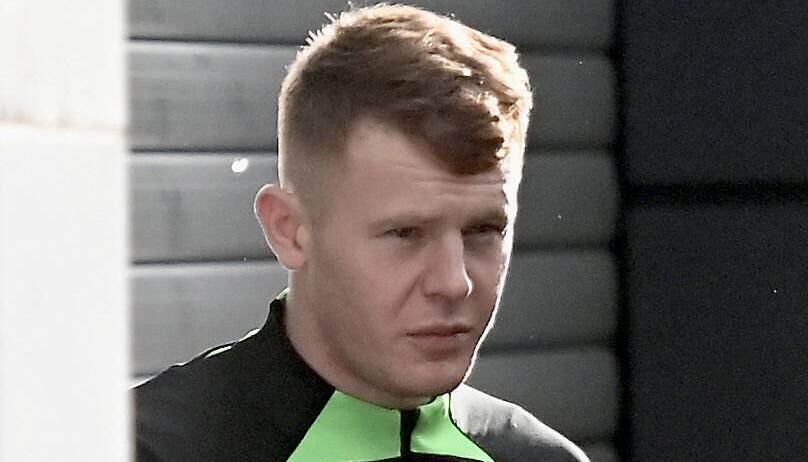
The images and videos of two men walking through the streets of Cork City, followed at a distance by a third man were mundane and unremarkable.
Anyone passing them that day could hardly have noticed anything out of the ordinary.
As Long’s lawyer, Ray Boland, remarked to the jury, they must have been struck by this “parallel Cork” going on around them, where drugs are all that matters to people dealing or stuck in addiction.
Mr Thornton was called as a witness in the trial.
Despite the extreme brevity of his responses, they spoke volumes about this parallel Cork.
About his friendship with Mr Quilligan, he was asked: “Had you some interests in common?”
He replied: “Yeah, drugs.”
In relation to what they did when they went back to Mr Quilligan’s apartment, he was asked: “What did you do with all the drugs you got?”
Mr Thornton replied: “Took ‘em.”
The buying and selling, robbing, and taking of drugs was grimly humdrum, and only the faintest picture of Mr Quilligan emerged in the case from this fog.
Final moments
Colette O’Driscoll did tell how she and Mr Quilligan had been in a relationship for 10 years at that time in September two years ago, adding that they were living in a Simon Community apartment at Riverview on Anderson’s Quay.
She didn’t like when Mr Quilligan brought others back, because the pair were not allowed to have visitors in their apartment accommodation.
She said Mr Quilligan had been on and off drugs through his life and, at this time, he was taking crack cocaine.
When he left at 8.30pm on September 1, 2023, the last thing he told her was that he would be back in five or 10 minutes.
However, he was walking out the door, cheek by jowl, with one of his murderers: Luke Taylor.
Even allowing for the background of drugs, it is hard to fathom the depths of violence that accompanied the final moments of Mr Quilligan’s life — blunt force blows from fists and a hammer, or something like it, and 19 broken bones, including a broken femur and several fractures to the skull.
Mr Long’s lawyer asked in respect of the man since convicted of murder: “How does he go from mechanic to small drug dealer to someone contemplating hyper violence because a few hundred quid was taken?”
How indeed?
It’s a hell of a question. A hell of a question for the Quilligan family to be left contemplating too now.
Members of the family were present throughout this disturbing trial. However, they weren’t the only ones in the Quilligan corner so to speak.
A large number of gardaí who have put countless hours into this investigation for more than two years were present every day of the murder trial in Cork too.
Over the years of Mr Quilligan’s life, it is easy to imagine that certain members of An Garda Síochána didn’t make it to the deceased man’s Christmas card list.
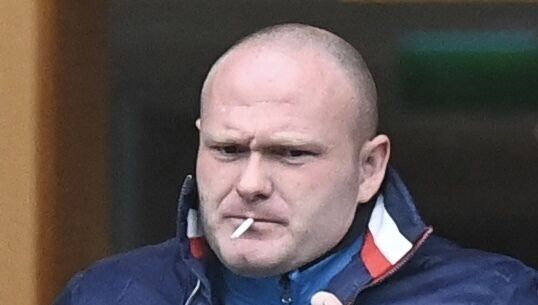
As a small-time drug dealer at times and a user of drugs for long parts of his life, Mr Quilligan would hardly have gone out of his way to encourage the attention of An Garda Síochána in Cork.
However, when it came to looking for justice for Mr Quilligan, it was the gardaí of Cork who mounted one of the most extraordinarily detailed, technical investigations ever undertaken in the area.
Taking CCTV alone, the level of analysis was mindboggling.
To take one example, the narrative that was established around the taking of the remains of the deceased from one rural location to an even more remote one, involved not just harvesting CCTV from outside farmhouses and houses along the country roads, and not just identifying the Toyota Rav 4 as it drove past, but it also entailed the meticulous tracking of vehicle headlights in the various areas where vehicles themselves were all but invisible.
It took a degree of attention even to follow this evidence at the murder trial — not to mind say put it together — but it was another compelling piece of a professionally assembled prosecution jigsaw that the jury saw.
Whatever we feel about our every move being overlooked by a heavenly body perched on the roof of a cathedral, there is no doubt that all of our lives are being watched every day by thousands of camera lenses tracking almost our every move.
Watching us. Taking it all in. With the potential to hold us to account on judgement day.
Judgement came for Niall Long and Luke Taylor on the fourth floor of the Anglesea St courthouse, where the Central Criminal Court sat for this trial. Both guilty of murder.
Across the rooftops from this room at Anglesea St, on the other side of the city, the Goldy Angel has yet to fall.

Unlimited access. Half the price.
Try unlimited access from only €1.50 a week
Already a subscriber? Sign in
CONNECT WITH US TODAY
Be the first to know the latest news and updates



